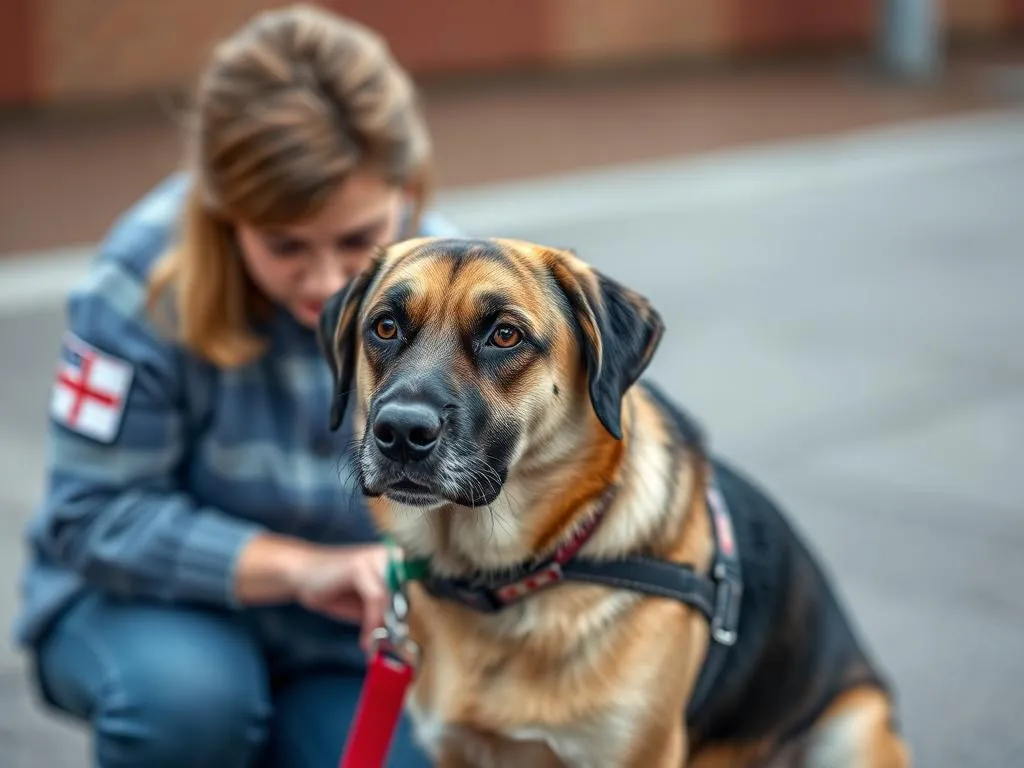
Introduction
Service dogs are specially trained canines that perform tasks to assist individuals with disabilities. Their roles can vary widely, from guiding those who are visually impaired to alerting individuals with hearing loss or providing support and comfort to those with mental health challenges. Understanding service dog etiquette is crucial not only for the well-being of the dog and handler but also for fostering a respectful and inclusive environment in public spaces. This article aims to provide comprehensive insights into the world of service dogs, their identification, proper etiquette for the public and handlers, and the benefits of adhering to these guidelines.
What is a Service Dog?
Definition and Purpose
According to the Americans with Disabilities Act (ADA), a service dog is defined as a dog that is individually trained to do work or perform tasks for a person with a disability. This might include guide dogs for the blind, hearing dogs for the deaf, and dogs that assist individuals with mobility impairments. It’s essential to recognize that service dogs are not the same as therapy dogs or emotional support animals; they are specifically trained to perform tasks directly related to their handler’s disability.
Training and Certification
The training process for service dogs is rigorous and comprehensive. These dogs undergo extensive training that can last from six months to two years, depending on their tasks. While the ADA does not require service dogs to have formal certification, it is often beneficial for handlers to have documentation from trainers or organizations that validate their dog’s training. This can help mitigate misunderstandings in public settings.
Recognizing a Service Dog
Identifying a Service Dog
When you see a dog in public, identifying whether it is a service dog can be tricky. Common identifiers include vests, harnesses, and ID cards that signify the dog’s role. However, it’s important not to assume that a dog is a service dog based solely on its appearance. Some service dogs may not wear a vest, especially if they are in training or if their handler prefers them not to.
Rights of Service Dogs
Service dogs have specific rights under the law, including the right to accompany their handlers in public spaces such as restaurants, hotels, and stores. This legal protection is crucial in ensuring that individuals with disabilities can lead more independent lives. It’s important for the public to understand these rights and to respect them.
Service Dog Etiquette for the Public
General Behavior Around Service Dogs
When encountering a service dog, it’s essential to adhere to proper service dog etiquette. This means refraining from petting, feeding, or distracting the dog. Service dogs are trained to focus on their tasks, and any distraction can hinder their ability to assist their handlers. Maintaining a respectful distance is crucial; if you see a service dog working, it’s best to give it space.
Interacting with Handlers
If you feel the need to approach a handler, do so with respect and consideration. Start by asking if they are comfortable answering questions. Always respect the handler’s personal space and privacy. For many handlers, their service dog is a vital part of their daily life, and they may prefer to keep interactions brief.
Questions and Curiosity
While curiosity is natural, it’s essential to keep questions respectful and non-intrusive. Asking whether the dog is a service dog is generally acceptable, but probing into the nature of the handler’s disability might be inappropriate. It’s best to follow the handler’s lead in conversation and respect their boundaries.
Service Dog Etiquette for Handlers
Training Your Service Dog
Consistent training and reinforcement are essential for the success of a service dog. Handlers should regularly practice commands and ensure their dogs are well-behaved in various environments. This not only helps maintain the dog’s skills but also contributes to a positive public perception of service dogs.
Handling Public Interactions
Handlers should be prepared for questions and interruptions in public. Developing a polite and clear response can help manage these interactions effectively. Some handlers choose to carry a card that explains their service dog’s role, which can help minimize interruptions and educate others.
Educating Others
Educating the public about service dog etiquette is an important responsibility for handlers. Sharing information about the rights and roles of service dogs can foster a better understanding and promote respectful interactions. Handlers can also engage in community events or discussions that highlight the importance of service dogs and their contributions.
Benefits of Proper Service Dog Etiquette
Enhancing the Experience
Proper service dog etiquette improves the experience for both handlers and dogs. When the public understands how to behave around service dogs, it reduces stress for both the handler and the animal. A calm environment allows service dogs to perform their tasks effectively, benefiting their handlers.
Promoting Awareness and Acceptance
Adhering to service dog etiquette plays a vital role in promoting awareness and acceptance of individuals with disabilities. When people understand and respect the roles of service dogs, it fosters a more inclusive society. This awareness can lead to more opportunities for individuals with disabilities, allowing them to navigate public spaces with greater ease.
Reducing Incidents and Conflicts
Understanding and practicing service dog etiquette can significantly reduce incidents and conflicts in public spaces. Misunderstandings can lead to confrontations, which can be stressful for both service dog handlers and the public. By educating ourselves and respecting the rights of service dogs, we can create a more harmonious environment for everyone.
Common Misconceptions About Service Dogs
Myths vs. Facts
There are several misconceptions surrounding service dogs. One common myth is that all dogs are service dogs if they are wearing a vest. In reality, only dogs that have been specifically trained to perform tasks related to a disability qualify as service dogs. Emotional support animals and therapy dogs, while beneficial, do not have the same legal protections or training requirements.
Legal Misunderstandings
Another frequent misunderstanding is the distinction between service dogs and therapy dogs. Service dogs are protected under the ADA and have public access rights, while therapy dogs are not. They may visit hospitals or schools but do not have the same access rights as service dogs. Clarifying these differences is essential for promoting proper service dog etiquette.
Conclusion
Understanding and practicing service dog etiquette is crucial for fostering a respectful and inclusive society. It enhances the experience of service dog handlers and their companions, promotes awareness, and reduces misunderstandings. By being informed and considerate, we can all contribute to a better environment for individuals who rely on service dogs for support.
This comprehensive guide aims to illuminate the importance of service dog etiquette, ensuring that both the public and handlers can engage positively and respectfully in various environments. Service dogs play an invaluable role in the lives of their handlers, and respecting their work is a small but significant step toward inclusivity.









